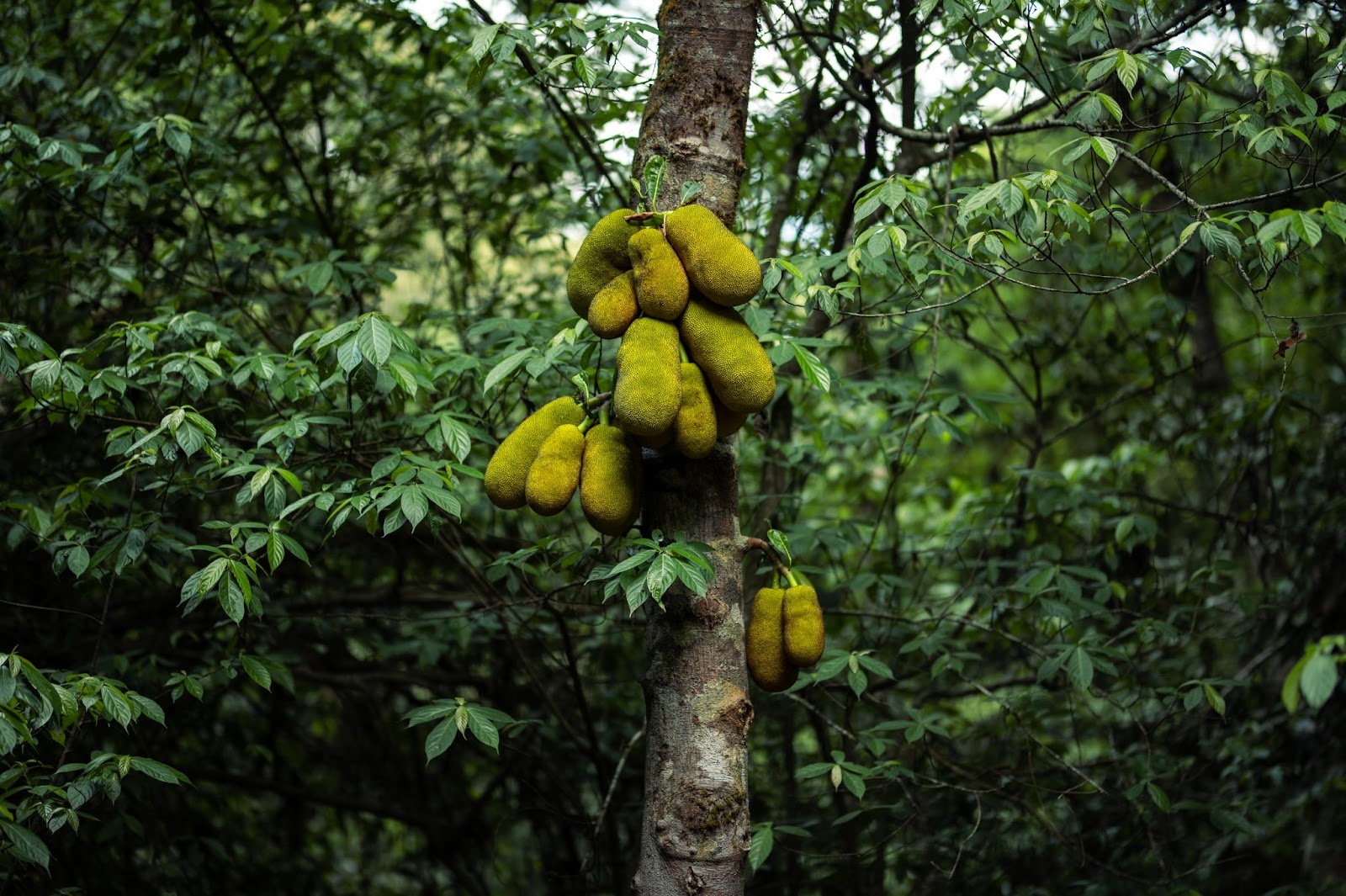
7 Sacred Plants & Trees in the Western Ghats of India
April 2, 2024
Permaculture vs Organic vs Natural Farming: How Different or Similar Are They?
May 2, 2024Permaculture Farming: A System of Self-Sufficiency We Need
Pits marked and dug in the food forest patch at the Poomaale 1.0 Collective, Coorg,
Permanence is what we all crave. We wish that we keep having all that we have today to support a healthy lifestyle and possibly more in the future. Nutritious food, clean air and water, a home to live in, energy supply, a healthy environment – all these are the basic things we need a stable supply of on an everyday basis. But when the reins of producing and supplying them are in the hands of several volatile global factors – mass production, forest deterioration, industrialisation, etc. – that can not only limit the availability of these resources but even deter their quality and harm the earth while doing so, who is to say this system would sustain? Among these, farming, or food cultivation, is a major area that has been taking a hit.
Farming today faces several problems owing to global climate change and a hoard of environmental issues tagging along. We have long realised the pressing need for more sustainable solutions to modern farming issues and are on the cusp of applying every possible solution in the books. Here is where the concept of Permaculture takes the spotlight and, subsequently, Permaculture Farming. But what exactly is it, and how does it warrant a brighter, greener future for the planet?
What is Permaculture?
Permaculture is a pod containing two peas – ‘permanent agriculture’ and ‘permanent culture’. It is a design practice that blends the two and encourages sustainability in material form (food, resources, energy, and more) as well as non-material form (lifestyle, values, and culture). Permaculture is an approach to designing ecologies that resemble (or rather borrow from/imitate) the way natural ecosystems, like forests, work.
The permaculture design process builds on careful and sensitive research and experimentation by using the energy and resources readily available on the land in focus, thus reducing the human footprint as much as possible. Its aim is to let the user of a landscape create a system where all that they need is produced, used, reused and reverted within the same landscape, bringing independence to the way we consume what we need daily.
The concept of permaculture is not just limited to designing nature that we can touch and feel but also extends to how we think, interact with nature and its beings, and live in harmony with one another. It is a holistic framework where all the things we need for quality living – food, water, shelter, community, learning, clothing, etc. can be built by borrowing resources from each other in an energy transfer loop locally. Farming or food growing is a part of the whole design system, and that is nothing but Permaculture Farming (sometimes called Permaculture Agriculture).
What is Permaculture Farming?
Permaculture farming poses a potential solution to the problems persisting in the agricultural sector. The purpose of permaculture farming design is to build resilient, sustainable and self-replicating food-growing systems based on specific ethics and principles.
A well-designed permaculture farm yields healthy and nutritious food from soil that can retain its fertility and provide for several generations, for it is part of a larger system of energy and resource management that are designed to be self-sufficient too. It is a sustainable agriculture process that aims to build self-sustaining farmlands that can grow wide-ranging crops and house a diverse range of living beings that benefit mutually. The use of manufactured energy is also at a minimum. It is done by studying and tapping into the natural/organic cycles of the earth.
Such sustainable permaculture farming results in the creation of ‘food forests’ – forest-like ecosystems designed to generate an abundance of food. Conserving natural resources and reducing the human footprint are also key concerns when building these food forest farms.
The process of generating food forests or permaculture farmlands involves
- Restoring the natural balance and nutrients of the land
- Ensuring healthy water levels and soil diversity
- Generating abundance and diversity of food and resources
- Taking accountability for all the inputs and outputs of the land
- Building a self-replicating, self-sustaining and cyclical ecosystem
Permaculture farming is the way of building places where humans, animals, living beings and all the natural elements can coexist and evolve harmoniously for as long as time.
Can We Build Resilient Communities Through Permaculture?
Today, we head to the supermarket to buy packaged food from the racks, wait for tankers to supplement our water needs, pay extra for energy backup and generators, and oftentimes don’t even remember the names of our neighbours while living 10 feet away. The lack of belonging, community emotion, and need to connect to nature is evident among most of the urban population. Adopting permaculture in your life, however small the scale can bring a level of sustainability to our lives. Whether you have a kitchen or balcony garden, a homestead, or farmland, the permaculture framework can be applied as it moulds to the context and location.
At Beforest Collectives, we are applying permaculture design on a large scale (100+ acres) with the support of a conscious, nature-loving community. By pooling our personal resources, knowledge and skill, along with what the landscape has to offer, we are on a journey to build sustainable landscapes that are food, water and energy secure. This journey of 5+ years with 4 locations (Coorg, Hyderabad, Mumbai and Bhopal) is only going to get longer but more joyous nonetheless as more forest-loving folk join our tribe.
Have you been wanting to take a step towards self-sufficiency? Join a Beforest Collective and build resilient landscapes together with a like-minded community.




